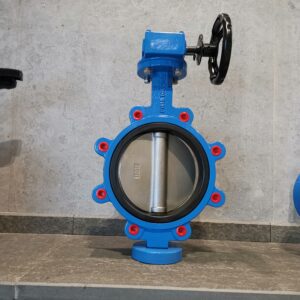Proper installation of pressure relief butterfly valves is critical to ensure their safe and effective operation.
Here are some common mistakes to avoid when installing pressure relief butterfly valves:
Incorrect sizing: It is important to select the correct size of pressure relief butterfly valve for the application. An undersized valve may not provide adequate relief, while an oversized valve may result in excessive pressure drop and reduced flow.
Incorrect installation location: Pressure relief butterfly valves should be installed in a location that allows for adequate pressure relief. They should be located as close as possible to the pressure source, but downstream of any other valves or equipment that could affect pressure.
Inadequate clearance: Pressure relief butterfly valves require adequate clearance around the valve body and disc to allow for proper operation and maintenance. It is important to ensure that there is sufficient space around the valve for access and maintenance.
Incorrect orientation: Pressure relief butterfly valves should be installed in the correct orientation to ensure proper flow and pressure relief. The valve disc should be oriented such that it moves away from the pressure source when opening.
Improper torque: Pressure relief butterfly valves should be tightened to the correct torque to ensure proper sealing and prevent leaks. triple offset butterfly valve factory However, over-tightening can damage the valve components and lead to improper operation.
Lack of testing: It is important to test pressure relief butterfly valves after installation to ensure proper operation and pressure relief. This can help identify any installation or operational issues that need to be addressed before the system is put into service.
Overall, proper installation of pressure relief butterfly valves is critical to ensure their safe and effective operation. By avoiding common installation mistakes and following proper installation procedures, businesses can ensure that their pressure relief butterfly valves provide reliable and effective pressure relief in a variety of applications.
What are some consequences of over-tightening pressure relief butterfly valves?
Over-tightening pressure relief butterfly valves can have several consequences, including:
Damaged valve components: Over-tightening can cause excessive stress on the valve components, such as the disc and spindle. This can result in deformation, cracking, or other damage that can compromise the valve’s sealing and pressure relief capabilities.
Leaks: Over-tightening can cause the valve body to deform or warp, resulting in leaks around the valve body or disc. This can lead to loss of pressure, reduced flow, and potentially hazardous conditions.
Inaccurate pressure relief: Over-tightening can affect the accuracy of the valve’s pressure relief capabilities. This can result in inadequate pressure relief, which can lead to damage to the system or equipment.
Difficulty in operation and maintenance: Over-tightening can make it difficult to operate and maintain the valve, as it can cause the valve components to seize up or become stuck.
Safety risks: Over-tightening can compromise the safety of the system or equipment, as it can lead to leaks, inadequate pressure relief, or other hazardous conditions.
Overall, over-tightening pressure relief butterfly valves can have serious consequences, including damage to valve components, leaks, inaccurate pressure relief, difficulty in operation and maintenance, and safety risks. It is important to follow the manufacturer’s instructions and recommended torque values when installing and tightening pressure relief butterfly valves to ensure their safe and effective operation.
